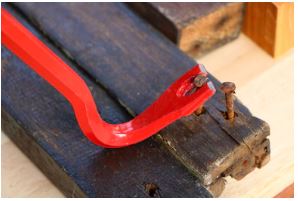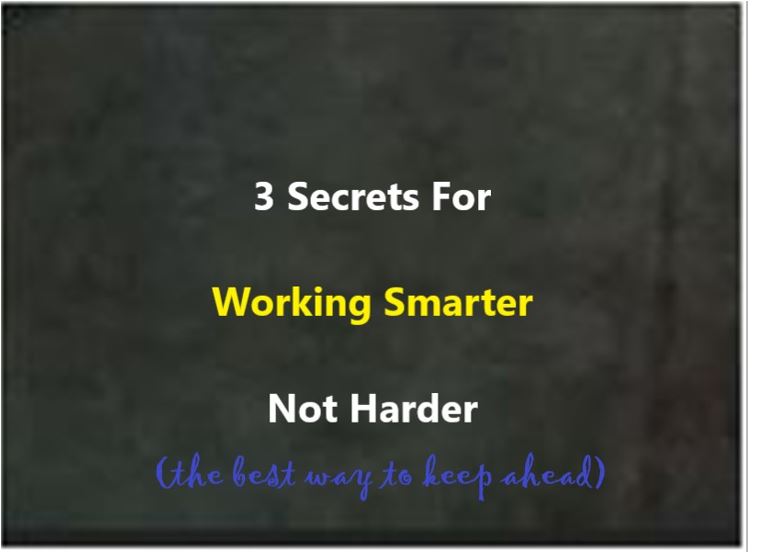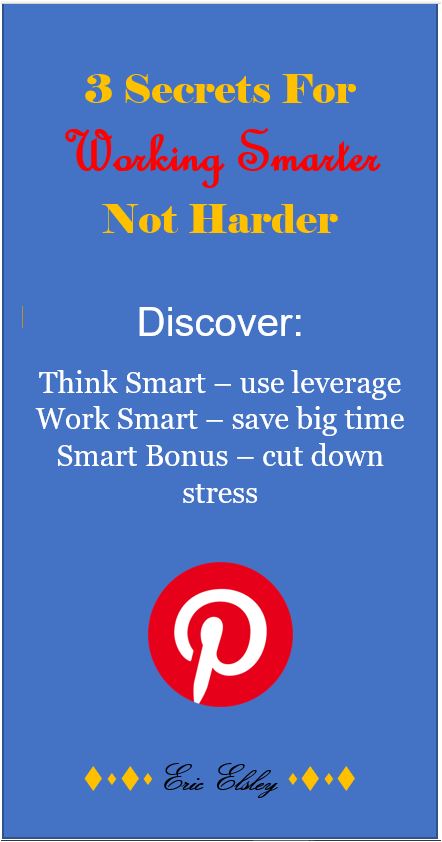2. The .5% Rule – Maximizing Clever Design
3. The .5% Rule – Leveraged Benefits

The aim in this article is explain how to create a system (that teaches you how to work smarter not harder via leverage) where both you and your employer are winners. This is generally known as a win / win situation. It is not common for employees to be able to setup a system at work that enhances their work while improving their work – life balance along with helping your boss meet their goals.
The definition of leverage is:
- The mechanical advantage or power gained by using a lever.
- To use (a quality or advantage) to obtain a desired effect or result
1. The .5% Rule – Why You Need To Double Your Results?
The .5% Rule looks at using creative thinking effort (leveraged) to maximum advantage. It is vital to keep an open-mind until you have read the whole article as much of what is discussed is counterintuitive.
Many
workers are so busy trying to fulfil their obligations to their employer that
they have little time to think of anything else. This is a catch 22 situation.
If you had time to figure out how to be more efficient at work then you would
be able to do more with less time and effort. That would most definitely be a
win for you and also for your employer ie a win / win situation. The $64
million question is how do you make that happen? The best answer is often the
simplest one.
Let’s break this challenge down a bit to make it easier. To be able to achieve more with less time and effort will require you to leverage what you already know or are about to learn in order to achieve a new more efficient way to work.

Think of the simplest form of leverage in the picture. A simple lever (jimmy bar) that allows you to multiply many times over the exertion you put in to remove a nail many times bigger than you could normally move without a lever. Also, with much less effort
The best type of leverage for workers is knowledge of a new and better way to achieve a basic task. How will that give you leverage I hear you ask? This is the brilliant part to The .5% Rule, how to easily find leverage. The answer is so simple many people miss it or ignore it. Warning don’t be tempted to do that; it would be a huge mistake.
“You will find mighty leverage by improving your ability to do small tasks that you repeat often. “
Told you it was a simple answer but that does not detract from its enormous value. If you repeat a task weekly or even monthly then it makes sense that by finding a better way to do it you will save time and effort not just once off, but again and again and again and again ….. That will provide you with the real power of leverage. Once you have found a new improved way to do a task then you definitely have started to become more efficient. That my friend is a win / win for you and your employer.
Here is where the magic really tends to multiply. Once you become more efficient (ie you are able to do more with less time and effort) then you become less stressed and more comfortable at work. This is huge. Let me explain. According to stress.org, “Job stress is costly. Job Stress carries a price tag for U.S. industry estimated at over $300 billion annually. ”
Job stress genuinely breeds inadequacies which in turn minimise the efficiency of staff. Therefore, to become less stressed and more comfortable at work will in itself help to increase your efficiency. This is a hugely valuable flow on effect that will help you maximise your productivity at work. The often-forgotten part is that this flow on effect can also work in reverse. That is when you feel more stressed by the mounting workload you actually become less able to cope and deliver on your bosses’ expectations.
2. The .5% Rule – Maximizing Clever Design
First let’s take a look at the current situation. US workers spend on average 8.8 hours at work each day. Research shows that they are productive for almost 3 hours each day. That leaves a lot of unproductive time spent at work.
The .5% Rule is simple yet very effective. The .5% Rule requires that action to be taken each week to improve efficiency by .5%. That may sound like a lot to some and a little to others. So, on average each person would increase their efficiency by approximately 25% per year. Looking at it in those terms it now may sound impossible. It works along the lines of the 80/20 Rule. That is 20% of our actions give us 80% of our results. This is a counterintuitive view of how efficient workers act. Yet on deeper inspection the 80/20 Rule holds up. Do some testing of your own at work.
Don’t stress when you think of the large yearly efficiency target. Remember it is just that, a target to aim at and if you miss the target nothing bad will happen. Even if you do miss the target you will still have made huge inroads to becoming more efficient at work. The other important factor to keep in mind is that the .5% Rule works well because of its super clever design allowing you to maximise the leverage of your efforts. This may not be clear at the start but you will see it more clearly once you have used it for some time.
3. The .5% Rule – Leveraged Benefits
As discussed earlier in this article our most efficient efforts lie in improving tasks that are repeated. This maximises the brilliance of leverage. Let us look at how this has happened at work. Most people feel they need to think big to get the best results. This can be a real distraction. I suggest you think of small tasks, ones that are repeated often as possible.
A colleague of mine use to pay the same bills each month. She decided to look at using a template to speed up the process. She had never created a template before so it took her about one hour to research and build the first template. Now she needed 9 more templates for the other bills. Each of these only took 5 minutes on average to setup. I have created a few small tables to show the return on effort that was achieved in the first year. Remember an even higher return on effort would accumulate in all the other years while she was doing this task as well.
Time Invested / Saved In First Month

Net Time Saved Per Year

Return On Time Invested

To help give some perspective to the awesome power of leverage, if all the time saved is allocated to the week in which the effort was made to save time then check out the amazing results below. If this was done for 50 weeks of the year the productivity increase would equal…(see table below). The result would be higher if you add in days off from public holidays. That is working on tasks that are repeated monthly. Imagine what the result would be if you found some that were repeated weekly or even daily. These type of tasks are what makes up the 20% in the 80/20 Rule.
Return On Effort Adjusted

Yearly Productivity Increase

Summary
The .5% Rule is a simple yet clever system that teaches you how to work smarter not harder via the maximising of leverage. If you keep using it each week you will be on the path to far greater efficiency at work. Most importantly, it will give you the most precious of personal benefits. That is a renewed purpose for your work while you are able to see some light at the end of the tunnel for a better work – life balance. Also, you should be able to lower work pressures and stress making work a much healthier place to be. It will feel great to know you have a plan to make your work and life more fulfilling.
If you haven’t started yet start with something small today and prove how powerful the .5% Rule can be in your life. Let me know how you are going by leaving a comment below of what you plan to do or what you have already achieved. Who knows you may come up with better ways to save time than those I have suggested?
I hope you have found this article helpful and that it will increase your efficiency and decrease your stress at work over time.
A small request: If you liked this web page, please share it?
I know some people don’t share because they feel that website owners don’t need their “small” social share.
But here’s the thing…
A share from you would seriously help a lot with the growth of this site.
It won’t take more than 10 seconds of your time. The share buttons are right here.
Thank you so much!
Regards,
Eric Elsley
Work Less & Achieve More










